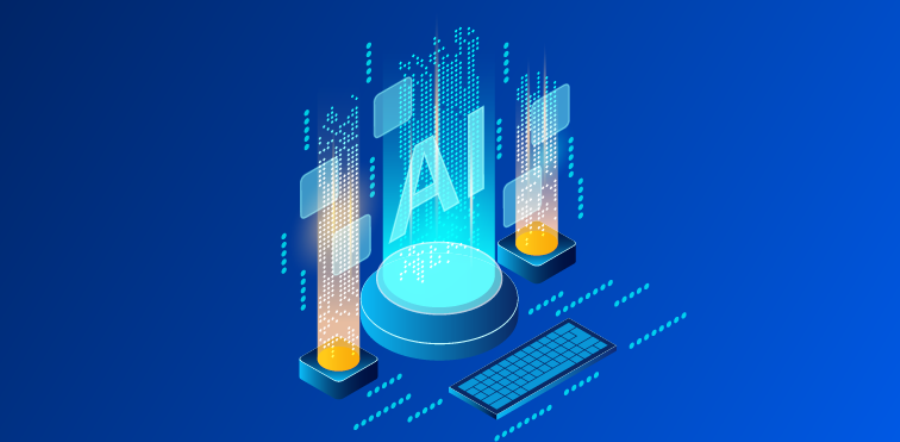In today’s digital world, Global South nations are increasingly recognizing the significance of digital innovation for their economic development and societal progress.
As these nations continue to embrace digital technologies, it becomes imperative for them to prioritize cybersecurity measures to protect their digital infrastructures.
Furthermore, the integration of artificial intelligence (AI) offers immense opportunities for these countries to leapfrog into the next wave of technological advancement.
This article explores the potential of integrating AI and cybersecurity initiatives in Global South nations to catalyze digital innovation, with a focus on the benefits and challenges associated with this integration.
Digital innovation has the potential to greatly impact economic development and social progress in Global South nations.
These countries often face unique challenges such as limited access to technology, infrastructure, and education, but they also have the opportunity to leapfrog traditional development pathways and harness the power of digital technology to drive progress.
One key factor in catalyzing digital innovation in Global South nations is increasing access to technology and the Internet.
This includes providing affordable and reliable internet access, as well as ensuring that individuals have the necessary devices and digital literacy skills to fully participate in the digital economy.
Additionally, fostering a culture of innovation and entrepreneurship is crucial for driving digital innovation in Global South nations.
This can be achieved through investment in research and development, the creation of supportive regulatory environments, and the provision of funding and support for technology startups and small businesses.
Collaboration and partnership between governments, the private sector, and civil society are also essential in catalyzing digital innovation.
By working together, these stakeholders can leverage their respective strengths and resources to overcome challenges and drive progress in areas such as e-commerce, fintech, and mobile technology.
Furthermore, investing in education and digital skills training is vital for ensuring that the workforce in Global South nations is equipped to take advantage of digital innovation opportunities.
This includes both technical skills such as coding and programming, as well as broader skills such as critical thinking, problem-solving, and creativity.
Prevailingly, catalyzing digital innovation in Global South nations requires a multi-faceted approach that addresses issues of access, skills, entrepreneurship, and collaboration.
By doing so, these nations can unlock the transformative potential of digital technology and drive progress in areas such as economic development, healthcare, education, and governance.
The harmonization of AI and cybersecurity initiatives has the potential to accelerate the development agenda in the Global South nations by providing them with advanced capabilities to detect and respond to cyber threats in real-time.
This integration not only enhances the speed and accuracy of threat detection but also fortifies the defence mechanisms of organizations, empowering them to stay one step ahead of increasingly sophisticated cyber adversaries.
Furthermore, the amalgamation of AI into cybersecurity represents a significant advancement in safeguarding digital systems and data against a wide array of threats.
By leveraging AI technologies, organizations can significantly minimize response times, enabling them to adopt a proactive stance in countering emerging cyber threats effectively.
However, to fully realize the benefits of this integration, it is imperative to ensure the responsible and ethical implementation of AI systems, coupled with continuous monitoring to mitigate potential risks such as false positives.
Ultimately, embracing the synergy between AI and cybersecurity has the potential to empower Global South nations in bolstering their digital infrastructures and driving innovation across various sectors, thus propelling sustainable development in the digital era.
Nevertheless, addressing challenges related to ethical considerations, skill gaps, and resource constraints is vital in effectively harnessing the power of AI and cybersecurity for sustainable development.
Through strategic planning and targeted investments, these nations can unleash the transformative potential of AI to achieve sustainable progress and digital transformation on a global scale.
AI can be used to improve threat intelligence, automate threat detection, and enhance incident response. Here’s an example of how AI can be integrated into cybersecurity initiatives:
1. Threat Detection and Analysis:
AI-powered systems can analyze large volumes of data and identify patterns or anomalies that may indicate a cyber threat.
For instance, AI algorithms can analyze network traffic, user behaviour, and system logs to detect unusual activities that may signify a potential security breach.
By using machine learning algorithms, AI can continuously learn from new data and adapt its detection capabilities to evolving threats.
2. Automated Response:
AI can be employed to automate responses to cyber threats. For example, AI-powered systems can automatically quarantine a compromised system, revoke access credentials, or isolate a suspicious network segment to prevent the spread of a cyber attack.
This rapid response can help to contain the impact of a security incident and reduce the time to mitigate a threat.
3. User Behaviour Analytics:
AI can be utilized to analyze user behaviour and identify abnormal activities that could indicate a security issue, such as unauthorized access or data exfiltration.
By leveraging AI-based user behaviour analytics, organizations can better detect insider threats and unauthorized access attempts.
4. Predictive Security:
AI can be used to anticipate and predict potential cyber threats by analyzing historical attack patterns and indicators of compromise.
This predictive capability enables organizations to proactively strengthen their security posture and prepare for emerging threats.
One example of the integration of AI and cybersecurity initiatives is the use of machine learning algorithms in network intrusion detection systems.
These algorithms can analyze network traffic in real-time, identify abnormal patterns, and flag potentially malicious activities. This helps organizations to detect and respond to cyber threats more effectively and efficiently.
By expansion, the burgeoning digital landscape in Global South nations presents unique opportunities and challenges regarding the amalgamation of AI and cybersecurity initiatives.
By harnessing AI for cybersecurity, these countries can effectively fortify their digital infrastructure, protecting sensitive data and critical systems from cyber attacks.
This transformation has widespread implications, not only in the realm of cybersecurity but also in bolstering digital innovation and economic progress across sectors such as healthcare, agriculture, finance, and beyond.
The applications of AI in healthcare, for instance, can substantially improve patient diagnostics and treatment, particularly in underserved regions of the Global South, leading to enhanced healthcare outcomes and bolstering healthcare infrastructure.
Similarly, in agriculture, AI can enable precision farming, optimizing resource allocation and crop management, resulting in increased productivity and food security. In the financial sector, AI can help combat fraud, enhance personalized services, and foster financial inclusion.
Despite these prospects, Global South nations grapple with several challenges in integrating AI and cybersecurity initiatives.
Ethical considerations, such as ensuring unbiased algorithmic decision-making and upholding data privacy, present critical hurdles that necessitate comprehensive governance frameworks. Moreover, addressing skills gaps, infrastructure limitations, and financial constraints remains imperative to realize the full potential of AI in cybersecurity.
By integrating AI into cybersecurity initiatives, organizations can bolster their defence mechanisms, increase the speed and accuracy of threat detection, and stay ahead of sophisticated cyber adversaries.
However, it’s important to ensure that AI systems are carefully designed and continuously monitored to mitigate the risk of false positives and ensure the ethical use of AI in cybersecurity.
The integration of AI and cybersecurity initiatives has the potential to revolutionize digital innovation in Global South nations.
By leveraging AI for cybersecurity, these countries can enhance their capabilities to detect and respond to cyber threats, thus safeguarding their digital infrastructures.
Additionally, the application of AI in various sectors such as healthcare, agriculture, and finance can drive innovation and economic growth. However, these nations must address the challenges related to AI and cybersecurity, including ethical considerations, skill gaps, and resource constraints.
With strategic planning and investment, Global South nations can harness the power of AI and cybersecurity to propel their digital transformation and achieve sustainable development in the digital era.
In conclusion, while the integration of AI and cybersecurity presents both challenges and opportunities for Global South nations, strategic planning and sustained investment can position these countries at the forefront of digital transformation and sustainable development.
By addressing the ethical, technical, and resource-related impediments, Global South nations can effectively leverage AI for cybersecurity to navigate the digital era, fostering innovation, and economic growth, and ultimately advancing the well-being of their citizens.







